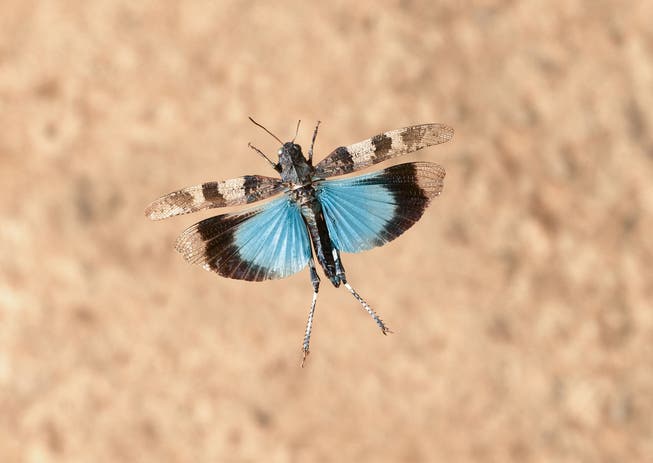The nature conservation organization Pro Natura has chosen the blue-winged grasshopper as “Animal of the Year” 2023. The insect is considered an ambassador for the biodiversity crisis.
Blue-winged grasshopper adapts perfectly to its habitat.
The blue-winged grasshopper (Oedipoda caerulescens) replaces the garden dormouse as “Animal of the Year”. As Pro Natura announced on Tuesday, the insect draws attention to the value of ephemeral natural paradises. The new animal of the year with the somewhat unwieldy name inhabits patchy dry meadows, gravel banks with sparse vegetation in floodplains or slightly overgrown railway and commercial areas, explains Florinrutschmann, Locust specialist and protection area officer at Pro Natura Aargau. In Switzerland, she finds such habitats mainly in Valais and Ticino, but also scattered in northern Switzerland, sometimes in the middle of the city.
Biodiversity is high where she lives
Among the insects, the blue-winged grasshopper is considered an indicator species. In other words, where she lives, biodiversity is high, explainsrutschmann. However, the destruction of river landscapes and the intensification of agriculture and land use over the past 100 years have led to an acute biodiversity crisis and the decline of many insect species. Across Switzerland, 60 percent of insects and 40 percent of grasshoppers are now threatened. The blue-winged grasshopper is also potentially endangered in Switzerland. Climate change is an opportunity for them because of the higher temperatures. But the biodiversity crisis is threatening them too.
According to Pro Natura, the approximately two centimeters large blue-winged grasshopper has mastered the art of camouflage as well as spectacular appearances. In principle, it is difficult to discover in its natural habitat. That only changes when you get too close to her. Then the insect throws itself into the air, unfolds its sparkling blue wings and whizzes away. As soon as the surprising play of colors lights up, it’s already over. The blue plane lands and is literally swallowed up by the landscape. They usually sit perfectly camouflaged and barely visible on the ground. Here it is completely adapted to the color of its subsoil and can hardly be detected even at short distances.
Better camouflaged with each molt
All adult Blue-winged Wasteland Mantises die over the winter. The survival of the species relies on last summer’s eggs slumbering in the ground. The nymphs (larvae) hatch from the end of April. With each molt, the color of the animal adapts even better to the surface on which it lives, according to the Pro Natura species description. After four (males) or five (females) molts, the new generation mates. The cycle begins again.

The strong blue colored wings with clear black transverse bars make the animal of the year 2023 unmistakable.
The 115 grasshopper species native to Switzerland are just a small group of the approximately 30,000 native insect species known to date. According to the nature conservation organization, species diversity and especially the number of insects in Switzerland has been declining dramatically for decades. 60 percent of insect species are threatened. Locusts are an unmistakable indicator of this development.
